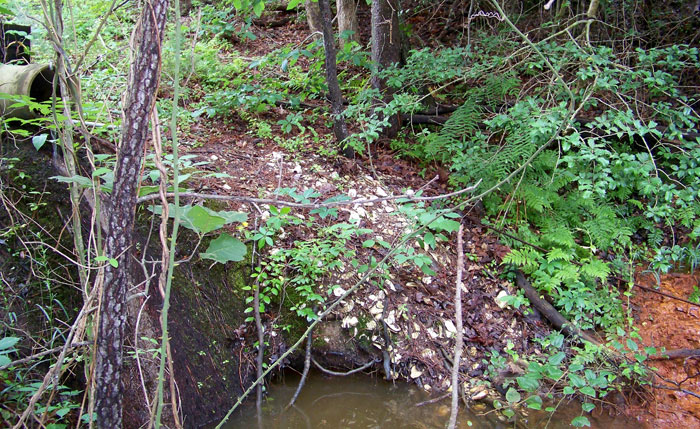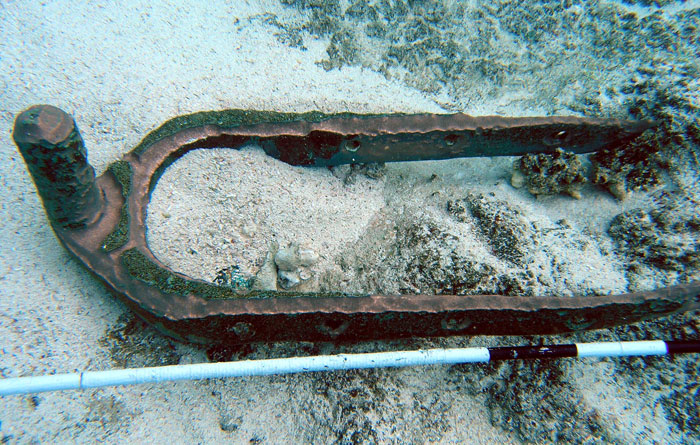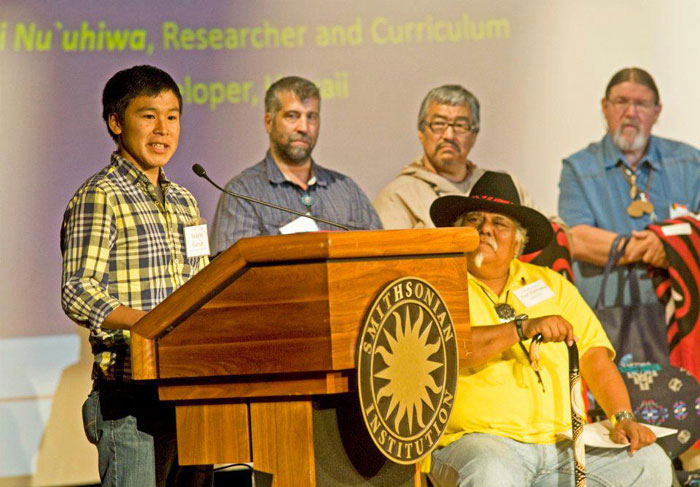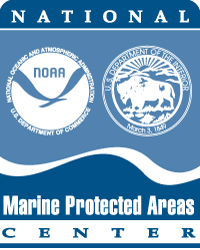Climate Change Adaptation
A Resource by the Marine Protected Areas Federal Advisory Committee (These statements do not necessarily reflect the positions of NOAA or the U.S. Government)

Heritage sites are often the primary resource for understanding how humans responded to past climatic regimes, but are sometimes omitted from plans for mitigating adverse climate impacts. With renewed awareness of how climate change may impact cultural heritage, managers can take proactive steps to minimize the impact of climate change on their resources. Some expected changes include:
- Sea level rise will flood cultural resource sites in coastal floodplains and make other sites more susceptible to damage.
- Increased coastal erosion brought about by higher sea-levels, increased storminess, and greater climatic extremes may expose or inundate heritage resources.
- Changes in temperature and precipitation patterns may require improved infrastructures for enclosed cultural resources, especially historic sites, archives, and museum collections to adapt to hotter, colder, rainier, or more humid weather.
- Increased extreme weather events may cause significant damage to fragile heritage resources due to increased mechanical weathering or direct storm destruction.
- Rising ocean temperatures, changing oceanic circulation, and ocean acidification will have repercussions for communities that rely on marine resource for their heritage and regional identity. Also, altering the range of certain species (e.g. Teredo navalis, which consumes wood) may have devastating consequences for submerged heritage resources such as historic shipwrecks.
Opportunities and Obligations

Today, climate change threatens to destroy information about how people, past and present, have adapted to changes in their environment. In many societies, traditional knowledge and native language associated with the physical ethnographic resources are not always in written form, and instead are passed from generation to generation through oral tradition and expressive culture, such as song, dance, and music. Without intervention, such attributes may also be at risk of permanent loss because of possible population displacement or loss of the people possessing such knowledge. Resource managers need to consider the implementation of appropriate strategies regarding the protection or preservation of ethnographic resources within the context of climate instability. Moreover, such resources may serve as indicators of change or clues for protecting key ecological and cultural features within a traditional maritime cultural landscape.
Many historic and prehistoric cultural resources, in addition to their inherent value to the people and cultures connected to them, have scientific value as repositories of historical ecological data. These sites and records tell the stories of the ecological impacts of past peoples, and the ways that societies have adapted to past climate change.
Methods and Approaches

MPA managers may already be following Climate Smart Conservation principles in their management of natural resources. Such steps are highly compatible with managing the ethnographic resources of the MPA, which have cultural value to particular ethnic or social groups. These often include traditional ecological knowledge, resource use, archival data, genealogical information, family history, oral histories.
Other cultural resources, such as archaeological sites, submerged vessels, prehistoric rock art, historic and prehistoric structures, and/or museum collections, are fixed in place and derive much of their significance from the place in which they originated. Most are nonliving and have unique qualities. While their capacity to adapt to changing environments and conditions are limited, managers can implement "no-regret" strategies to minimize climate change impact.
Scenario planning
Scenario planning offers an approach for long-term strategic planning in situations with uncertainty and risk, in which managers consider a variety of options for the future and develop responses and action plans for each situation. It has been employed in business situations, and is now being used by conservation managers facing uncertain climate change. Scenario planning does not attempt to predict the most likely future but uses "what if" questions to explore a range of plausible multiple working futures and consider appropriate actions within them, including adaptive management strategies.
Vulnerability Assessment and Adaptation Strategies
The first step is to include cultural heritage resources within your own site's resource inventory, and to conduct a vulnerability assessment for heritage resources within your site's planning for climate change. Cultural sites, including ethnographic resources, must be fully documented, with prioritization given to those at high risk. For those identified as vulnerable, managers can work closely with partners to determine the resources' significance while specifying a course of action. These actions may include relocation, protection in place, research before loss, or no action. In many cases, effective strategies have a low cost of implementation and would significantly improve our ability to accommodate future climate changes.
"No Regret" Strategies
“No regrets” strategies are those that will benefit the site and potentially other sectors, regardless of climate impacts. These are also strategies that will not divert resources away from other priorities because they have a low to medium cost of implementation. “No regrets” strategies for the protection of cultural heritage resources may apply to the underwater resources within the MPA boundaries, the associated museums, archives, visitor centers, and the cultural knowledge relevant to the MPA.
Examples of these strategies include:
1. Structural Reinforcement
When cost effective, improving the structural stability, water drainage systems, and weather proofing of Cultural Resources sites will extend the lifetime of the site and may improve the functionality of the site.
2. Locate and Record Sites in Vulnerable Areas
Many coastal or recently submerged cultural heritage sites have never been recorded. Surveys, especially at low tide, are a cost effective means of collecting basic information before it is lost.
3. Prioritize Study of Vulnerable Sites
Identifying and focusing research efforts on those historical, archaeological and ethnographically significant sites that are most vulnerable to incurring irreversible damage due to effects associated with climate change should not adversely affect other sites.
4. Maintain and Increase Climate Control Capabilities
Increasing temperature and humidity monitoring capabilities at Museums and Archives, where records pertaining to the MPA's cultural heritage are kept, will help maintain archives, and increase year round usage of the site.
5. Maintain and Develop Emergency Management Plans
Most cultural heritage sites do not have emergency management plans and would benefit from strengthening and broadening existing plans to include heritage resources.
6. Increase Site Monitoring
Understanding certain climate change effects on heritage resources will demand increased study of site change over time (changing status of resources), which should not adversely affect other sites.
7. Communication
Encouraging dialogue between climate impacts and human interaction will be needed to respond to any threats from climate change: every place has a climate story such as climate impacts to cultural resources that involve change at the human scale, past human interaction with climate variability, origins of modern climate situation, traditional ecological knowledge. Capturing this knowledge through oral histories will preserve a key cultural resource of the MPA.
| Climate Change Effect | Strategies for protecting cultural heritage resources |
|---|---|
| Sea Level Rise |
|
| Coastal Erosion |
|
| Temperature and Precipitation Change |
|
| Extreme Weather Events |
|
| Rising Ocean Temperatures, Changing Circulation, and Ocean Acidification |
|
Case Studies
Ancient archaeological sites threatened by climate change in California
Cultural Resources Inventory and Vulnerability Assessment in Alaska
 Marine Protected Areas
Marine Protected Areas